Roses have always been known for their fragrance. Here are some of the biggest hitters in the fragrance field, which can fill your yard and house with cascades of flowers and surround you with heavenly aromas.
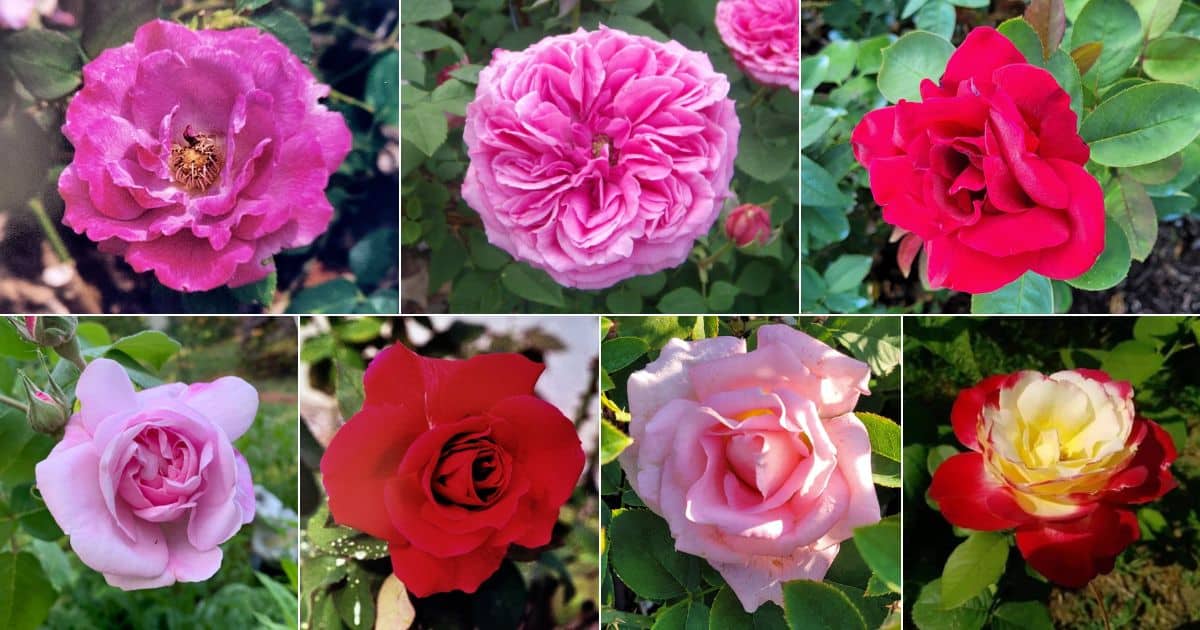
Jump to:
- ‘Angel Face’ (1968), hybrid tea
- ‘Chrysler Imperial’ (1952), hybrid tea
- ‘Evelyn’ (1991), Austin rose
- ‘Fantin-Latour’ (bef. 1936), centifolia
- ‘Madame Isaac Pereire’ (1876)
- ‘Double Delight’ (1977), hybrid tea
- ‘Mr. Lincoln’ (1964), hybrid tea
- ‘New Dawn’ (1930), climbing rose
- ‘Rose à Parfum de l’Hay’ (1901), rugosa hybrid
- ‘Tiffany’ (1954), hybrid tea
‘Angel Face’ (1968), hybrid tea
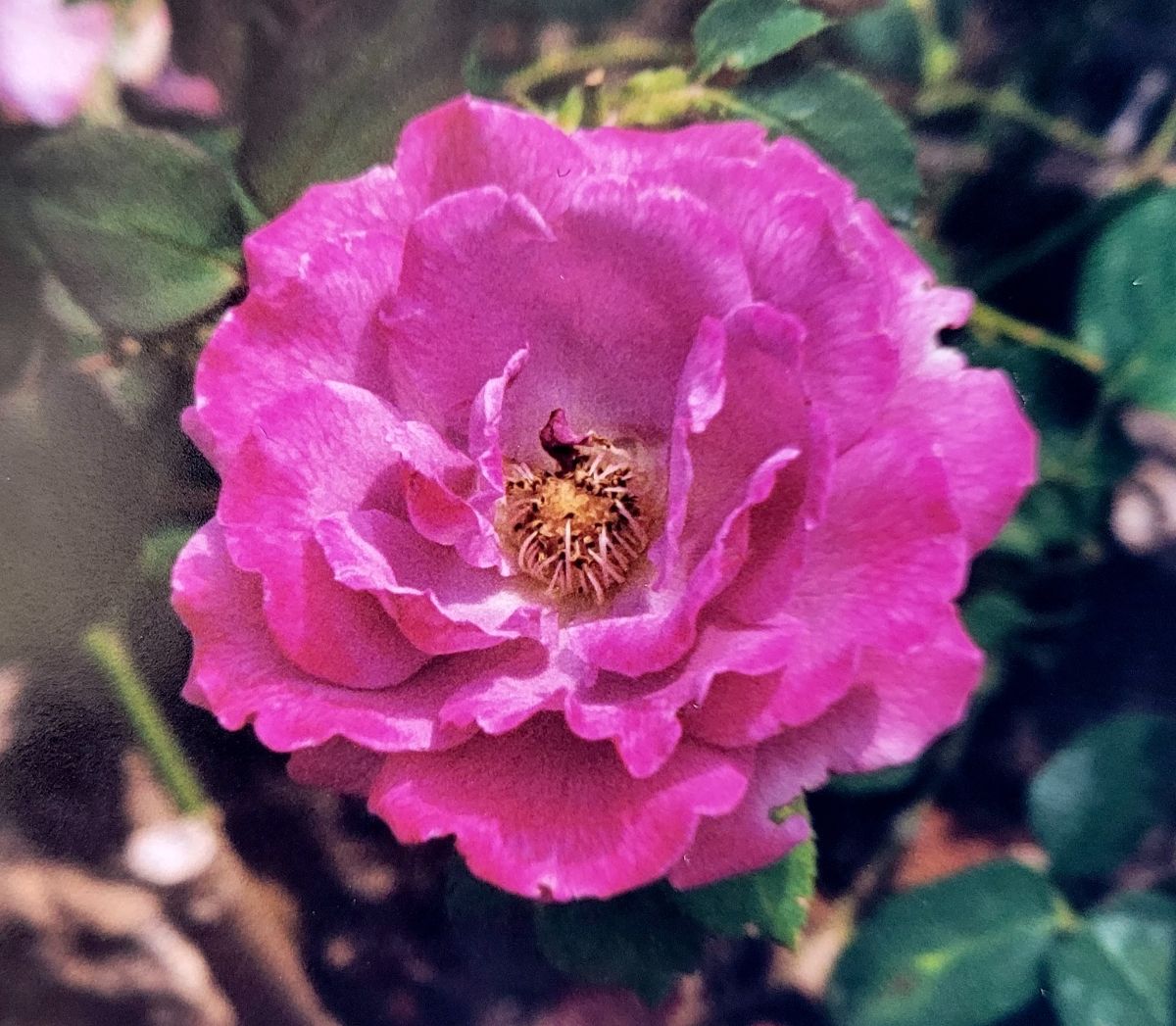
This is one of those rare mauve roses that is phenomenal on almost all fronts.
The lovely blossoms on the ‘Angel Face’ rose are a joy to see, bearing large clusters of lavender flowers with the sweetest ruffled petals, edged with ruby. I swear that every time I see one of these, I stick my face in the flower. The fragrance is heavenly, with a spicy citrus scent.
It’s a great cut rose, and if you bring one of these blossoms in, it will fill your living room with the scent of roses.
Mauve roses are often dogs because they’re bred for color, not for disease resistance or hardiness. It’s a lot tougher to get a mauve or violet rose anyway, for a number of reasons. ‘Angel Face’ is more susceptible to blackspot, but it’s also a fairly hardy little rose that can put up with drought and is pretty heat tolerant. Older rosebushes will give you more blossoms.
‘Chrysler Imperial’ (1952), hybrid tea
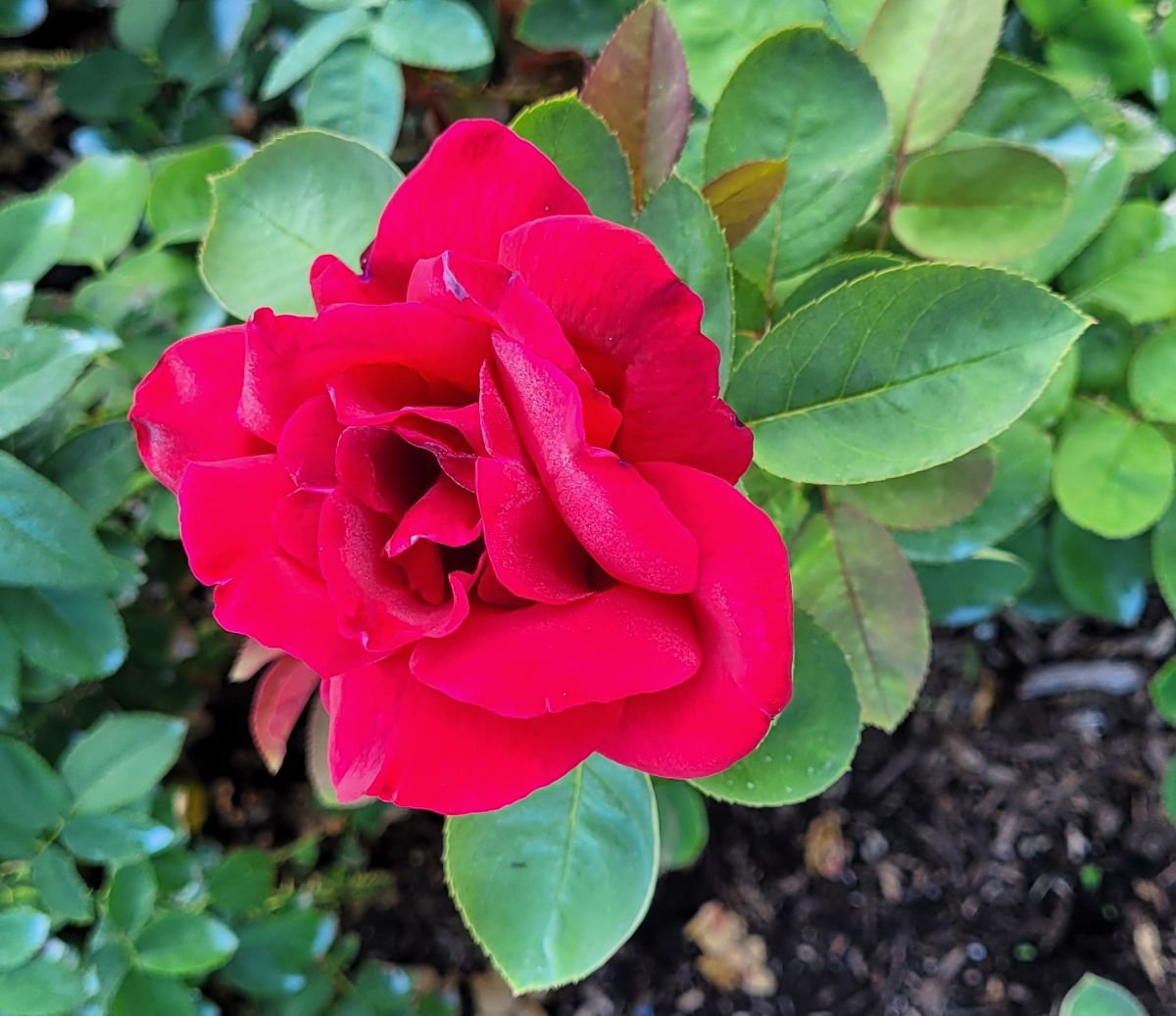
These swoonworthy roses were named as a marketing ploy for the Chrysler Imperial car. Well, guess which lasted longer – the rose or the car?
This hybrid tea has large, velvety-red blossoms with high centers (this is a classic look among hybrid teas) that look like you could get them at the florist’s. They do make excellent cut flowers, with 45-50 petals packed in every flower.
Unlike florist roses, the ‘Chrysler Imperial’ is sweetly scented with a strong citrus fragrance, and they’ll bloom in flushes from spring to fall.
The rose bush itself will grow from 3 to 6 feet tall (90–180 cm) and is somewhat resistant to powdery mildew but will pick up a little blackspot.
‘Evelyn’ (1991), Austin rose
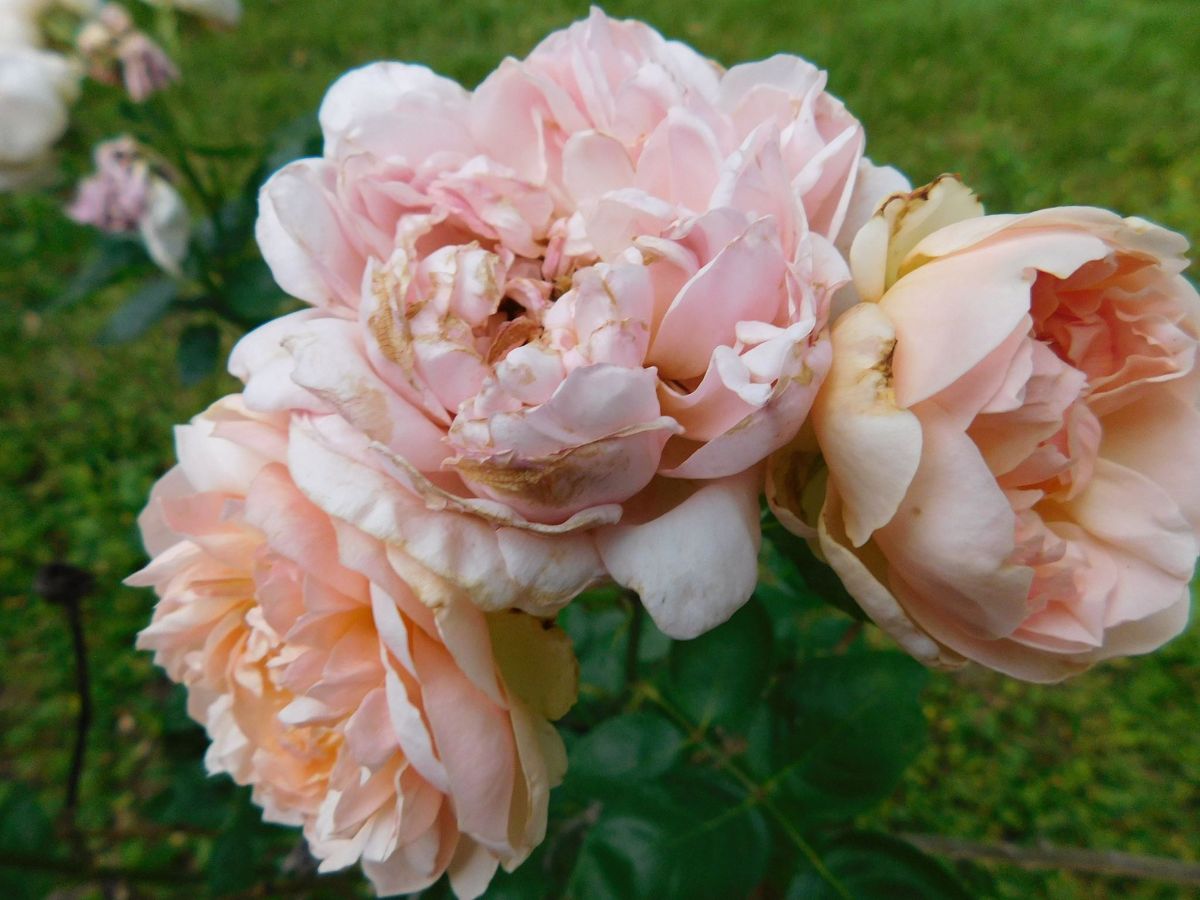
‘Evelyn’ is a lush, apricot-colored Austin rose. It has a gorgeous scent and apparently was used as a scent for Crabtree and Evelyn. But apparently, it’s been discontinued by David Austin and other growers. It’s still available from small suppliers, but you’ve really got to look for it!
‘Fantin-Latour’ (bef. 1936), centifolia
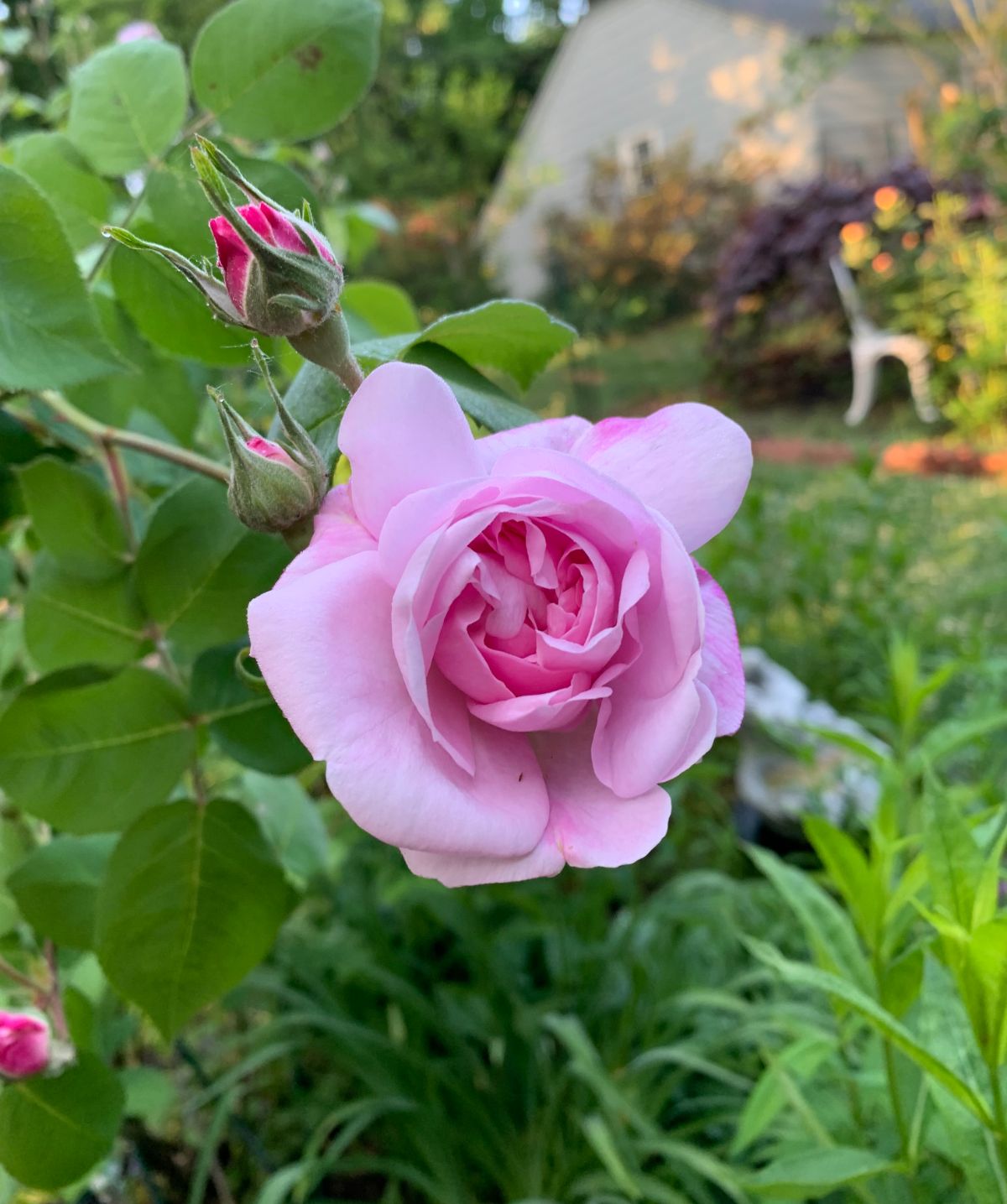
This old rose of unknown origin is a superlative rose with pure pink shapely blooms and fragrance in spades.
‘Fantin-Latour’ blooms only once a year, but it covers itself with large, powdery pink blossoms that fade to a soft pink; its fragrance is strong and delicious. The rosebush is attractive with its dark, glossy foliage. The blooms, large cups of soft pink, are accompanied by buds of a brighter hues.
The rose itself was named for Henri Fantin-Latour, a French painter and lithographer known for his flower paintings (particularly roses) in the mid to late 1800s.
Thought to be a centifolia, aka Cabbage Rose, or a China rose hybrid, ‘Fantin-Latour’ can be grown as a large shrub or a climber.
Its actual date of introduction is unknown because it is a “found” rose. The great rosarian Graham Stuart Thomas wrote, “As to ‘Fantin-Latour,’ this was given to me by Mrs. Ruby Fleischmann, who had had it from Mrs. Messel at Nymans. Both gardens were rich in old roses in the early 1950s, having been preserved like those at St. Nicholas since before the war. Ruby Fleischmann always called it ‘Fantin-Latour’ because of its close resemblance to the many roses in his paintings, but once again, there is no record of his having had a rose named after him.”
‘Madame Isaac Pereire’ (1876)
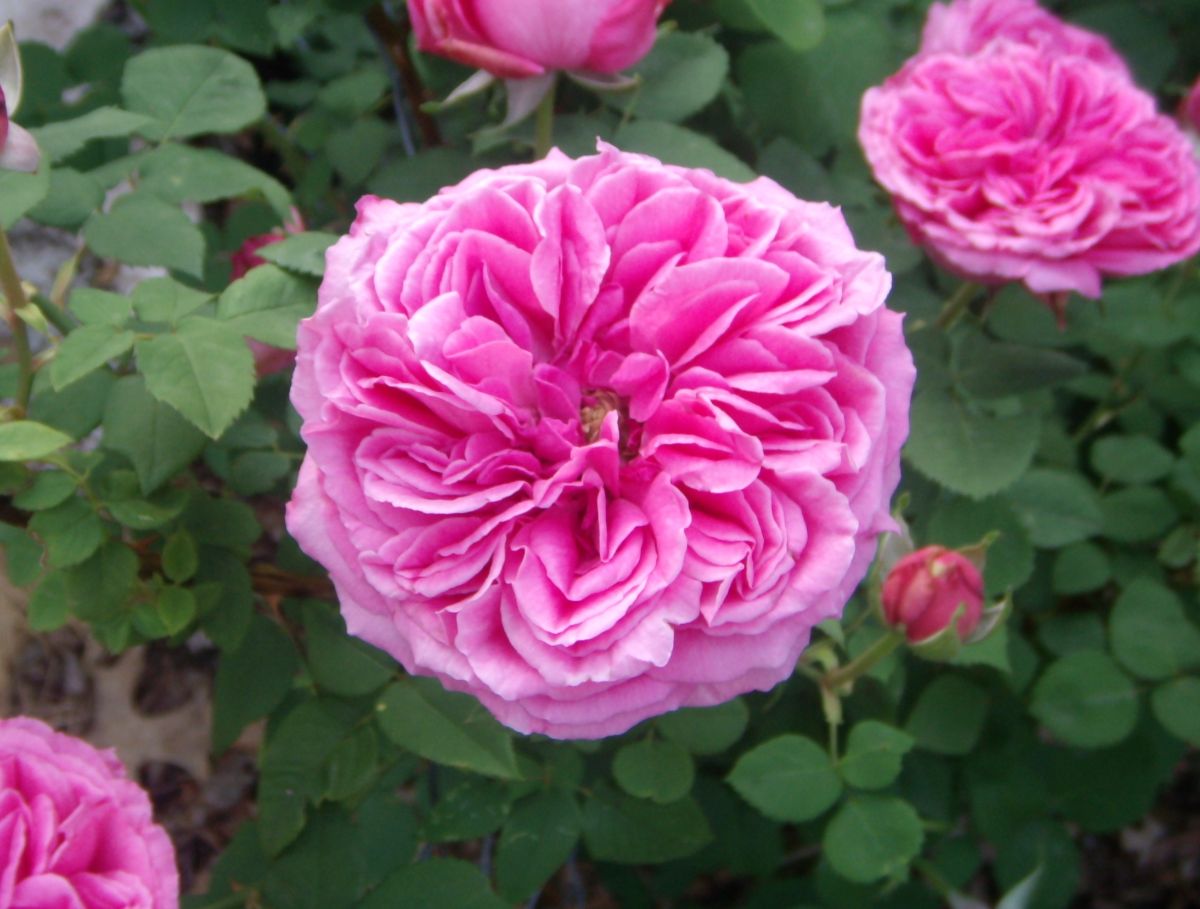
This old antique rose was originally named ‘Le Bienheureux de la Salle’ (The Blessed la Salle) when it was introduced, but in 1881 was renamed after the wife of a French banker.
Different roses are placed in different categories and classes, such as hybrid teas, grandifloras, polyanthas, Chinas, centifolias, and so forth. ‘Mme. Isaac Pereire’ is categorized as a Bourbon rose, a group of hybrids that originated on Réunion Island – which at that time was named Île deBourbon.
In the early 1800s, hybrids were thought to have started from a chance cross of the ‘Autumn Damask’ and the ‘Old Blush’ China rose, which were grown in hedges along the island. When the cuttings of this hybrid rose were brought to France in 1821, it was viewed with great interest and started a whole class of roses.
Bourbons are repeat flowering roses, generally with huge, opulent blooms that are strongly perfumed and have long arching canes that are often thornless. ‘Mme. Isaac Pereire’ does have thorns, but she will deck herself out with a grand show of large, raspberry-red blossoms and the amazing fragrance that goes on and on. If you save the petals, they hold that fragrance for a long time.
Bourbons are fairly cold hardy, and vigorous growers. They will pick up some blackspot, but they power through and keep growing, unlike some of those hybrid teas. They don’t need coddling. I never really mulched ‘Mme. Isaac Pereire’ when winter came, and she was unfazed by Missouri winters, always coming back in spring.
She might not work as well in wet climates, where botrytis might turn her opening buds into sad brown blobs.
Many Bourbon roses are also delightful for fragrance, including Souvenir de la Malmaison, Louise Odier, Madame Ernest Calvat, Zéphirine Drouhin (who is also thornless), and La Reine Victoria.
‘Double Delight’ (1977), hybrid tea
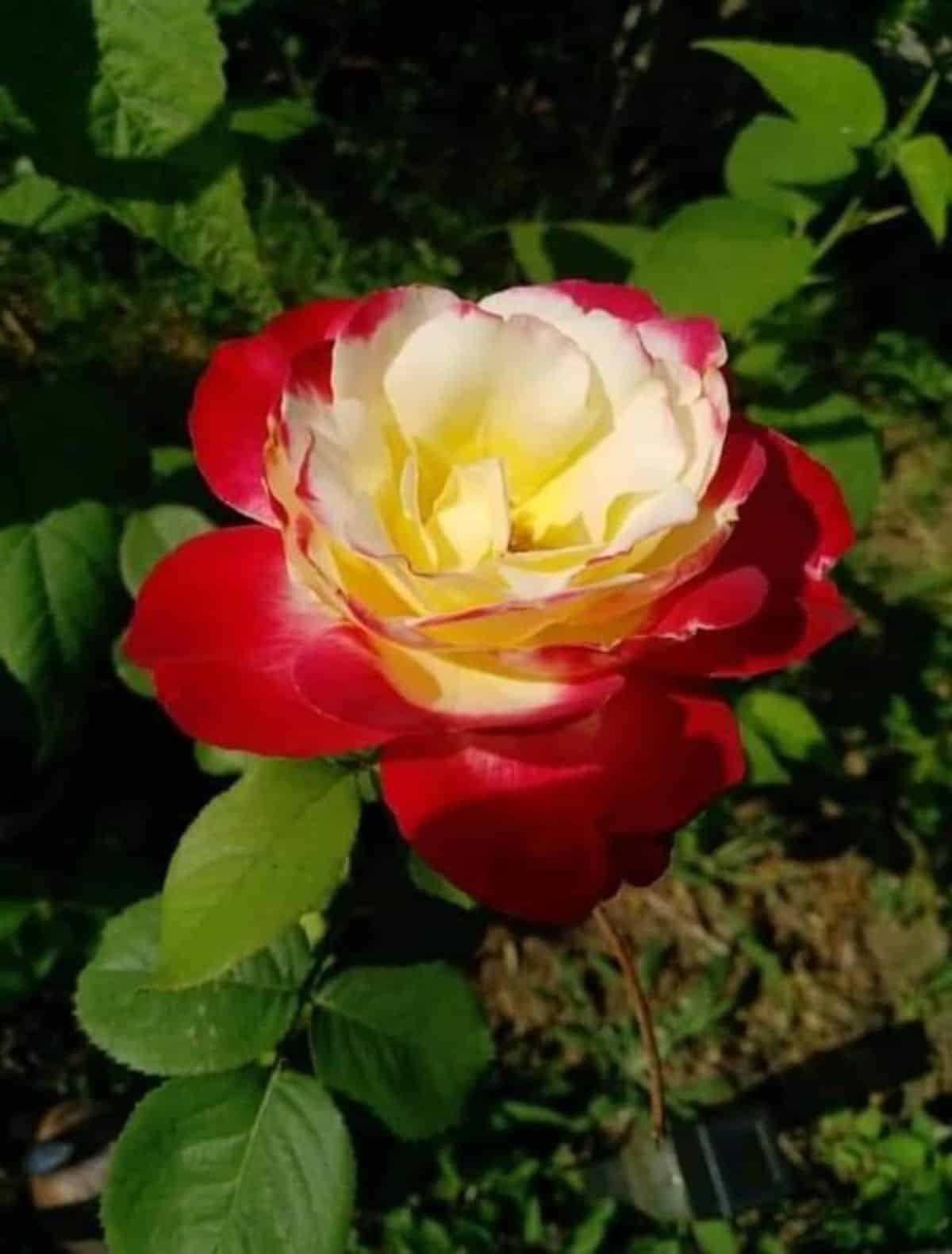
‘Double Delight’ is more of a triple delight, to be honest.
First, you have the large, generous blossoms. They’re a deep, luscious strawberry red wrapped around a creamy yellow center. They look almost photoshopped until you see them in person. The colors are just perfect together against the large, dark green leaves.
Second, the blossoms are as individual as snowflakes, with no two ever the same because the petals change color in the sun. The breeder, John Sheldon, bred the rose this way on purpose.
He said, “Some roses fade in the sun, some roses darken in the sun, some roses actually change color in the sun. Roses such as ‘Double Delight’ show these traits. … It was an area of hybridizing that others were ignoring. At one point, these traits were seen as faults. ‘Double Delight’ was almost discarded because it was thought to be just another WHITE rose. Only later were its phototropic characteristics seen when it turned red in the sun., so the blossoms will change in response to that. There’s always a beautiful variety.”

The third point is the best of all – the fragrance. Its intense, sweet smell is downright decadent. I wish that somebody would capture it in a bottle because it’s so delicious. If ‘Double Delight’ had boring, drab blossoms, I’d still grow it for the amazing fragrance.
For all these reasons, ‘Double Delight’ is one of the most recognizable roses you’ll ever meet. This is the one people will ask questions about when they visit your rose garden.
The ‘Double Delight’ rose will stand up in the heat of summer and covers itself with huge flushes of exhibition-quality blooms in spring and fall. These work well as cut flowers, too, so you can share them. Amaze your neighbors and delight your friends with a cut rose!
This rose makes a tidy shrub that gets from 3 to 5 feet tall and wide, and they look spectacular in mass plantings.
‘Double Delight’ roses are susceptible to powdery mildew and will need winter protection. But those flowers and that fragrance are more than worth it.
‘Mr. Lincoln’ (1964), hybrid tea
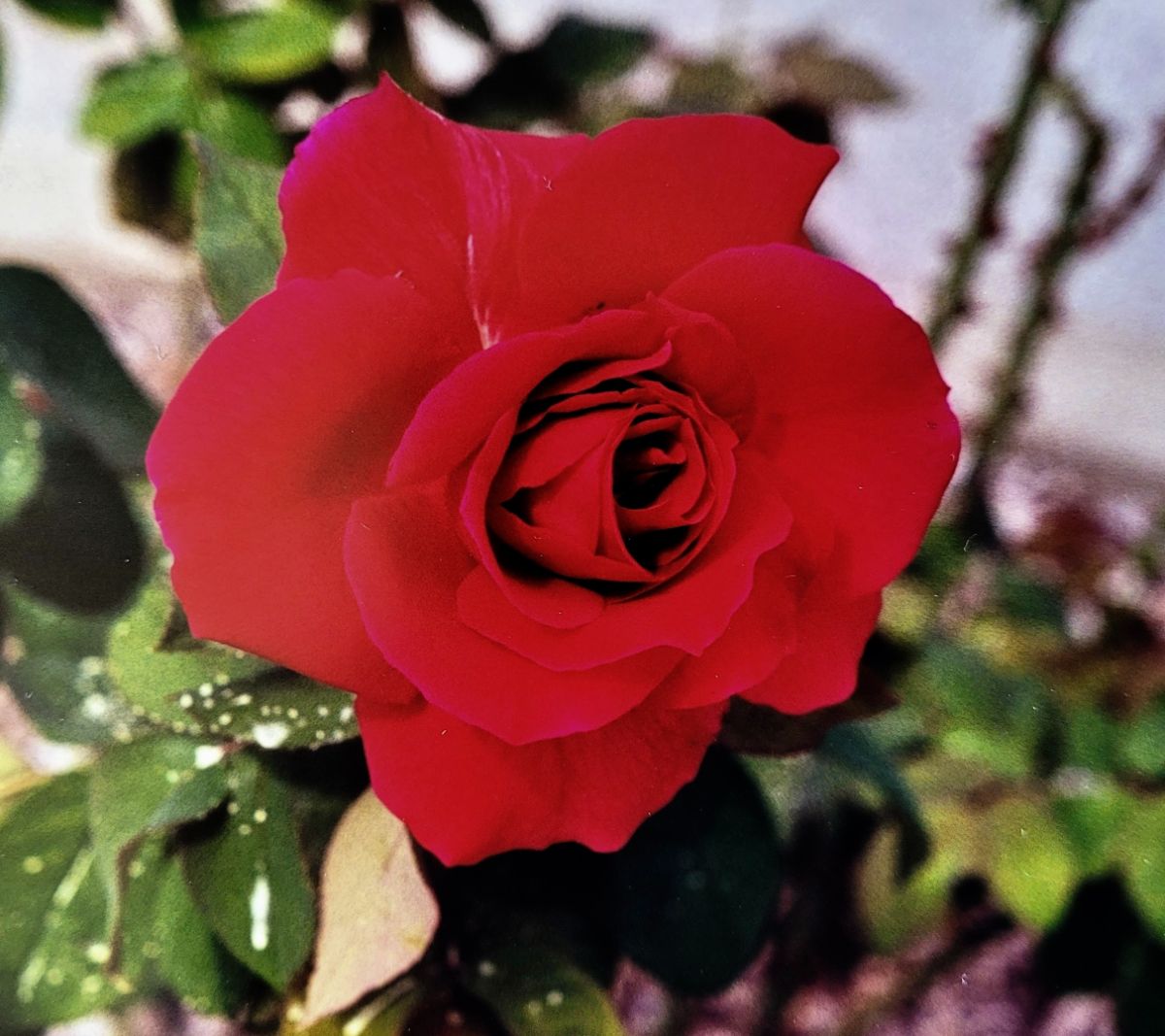
This rose was clearly a son of ‘Chrysler Imperial’ because of its rich fragrance, tall habit, stately form, and straight-up handsome looks.
It was because of their long stems and red blooms worthy of Valentine’s Day that ‘Mr. Lincoln’ outsold all these roses. It’s the bestselling crimson rose in the U.S. and a number one choice of florists.
The rose itself is tall (which makes sense, given its name), growing from 3 to 5 feet tall. Like its parent, ‘Mr. Lincoln’ also has velvety red roses that lighten as the blooms open. The high-centered blooms slowly open into a gorgeous rose, then open even wider, so you’re like, “Whoa, that is a really big rose!”
And the whole time, it’s just as fragrant as can be, and the rose keeps blooming all summer long.
When I grew the ‘Mr. Lincoln’ in the Krug Park rose garden during my municipal horticulturist days; these were the ones that people often tried to pick.
I caught one cheapskate guy attempting (unsuccessfully) to rip a ‘Mr. Lincoln’ rose off the plant for his woman, but he was foiled by the rose’s tough, fibrous stem and was just twisting the poor rose around at this point.
I chased him out of the city rose garden, then fixed the mess he’d made of the ‘Mr. Lincoln’ rose.
‘New Dawn’ (1930), climbing rose
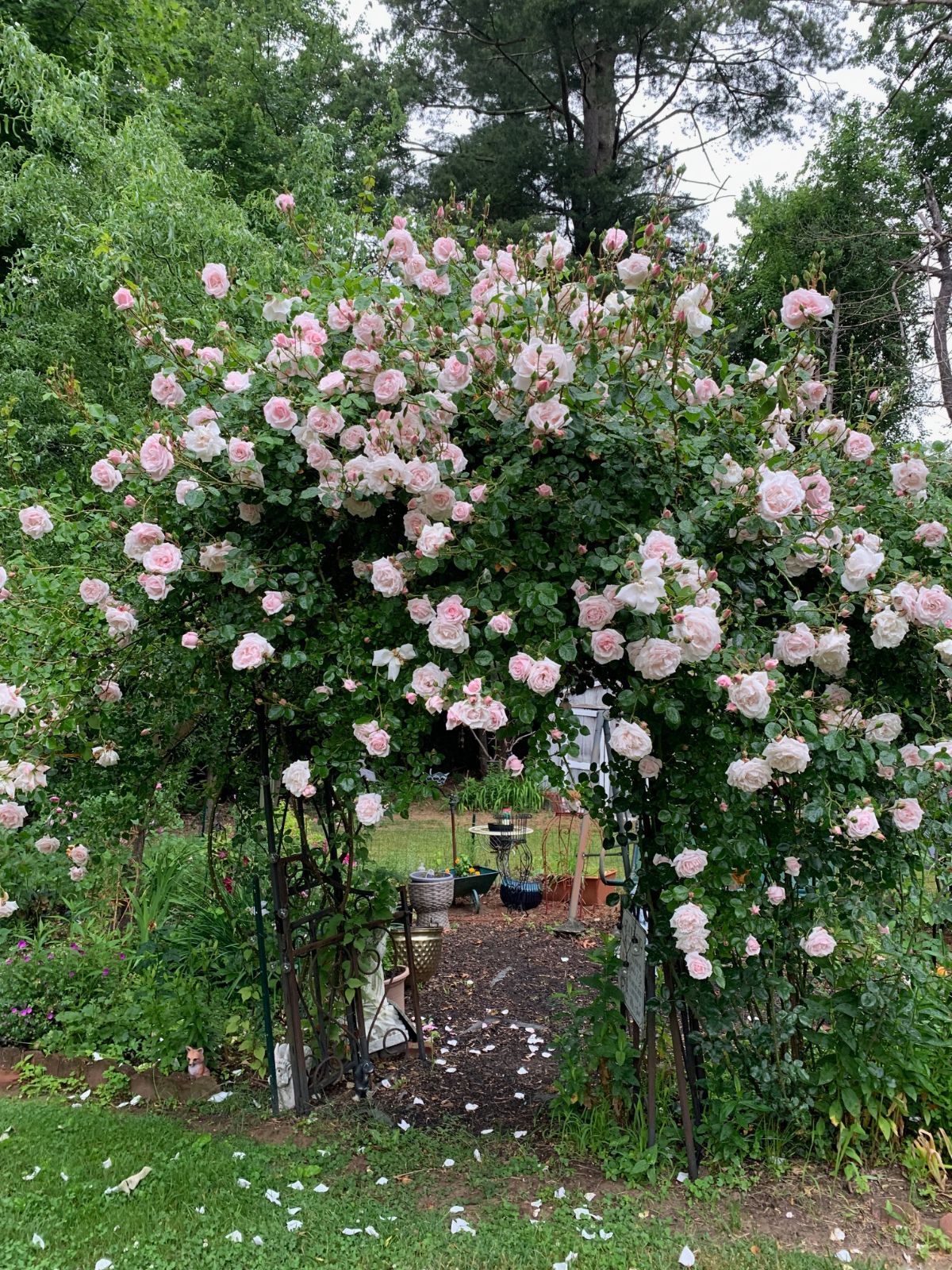
Fun fact: ‘New Dawn’ was the first rose to be patented. It’s wildly vigorous and will crawl over anything in its way. It repeat flowers through summer with a cheery flush of roses in apple-blossom pink, and all of them are overflowing with fragrance.
The glossy, dark-green foliage is very disease-resistant, which is helpful because this rose is going to be growing way over your head and often out of reach of your sprayer. The rose can easily grow 10 feet tall but, when contented, will scramble up to 20 feet. It has thick canes studded with thick thorns.
But the blossoms are popping out all summer, so there’s always something blooming (and smelling sweet) on the ‘New Dawn’ rose. If you take good care of your rose through the year, in the fall, you will be rewarded by big red hips. On the ROSE, not on your body!
‘Rose à Parfum de l’Hay’ (1901), rugosa hybrid
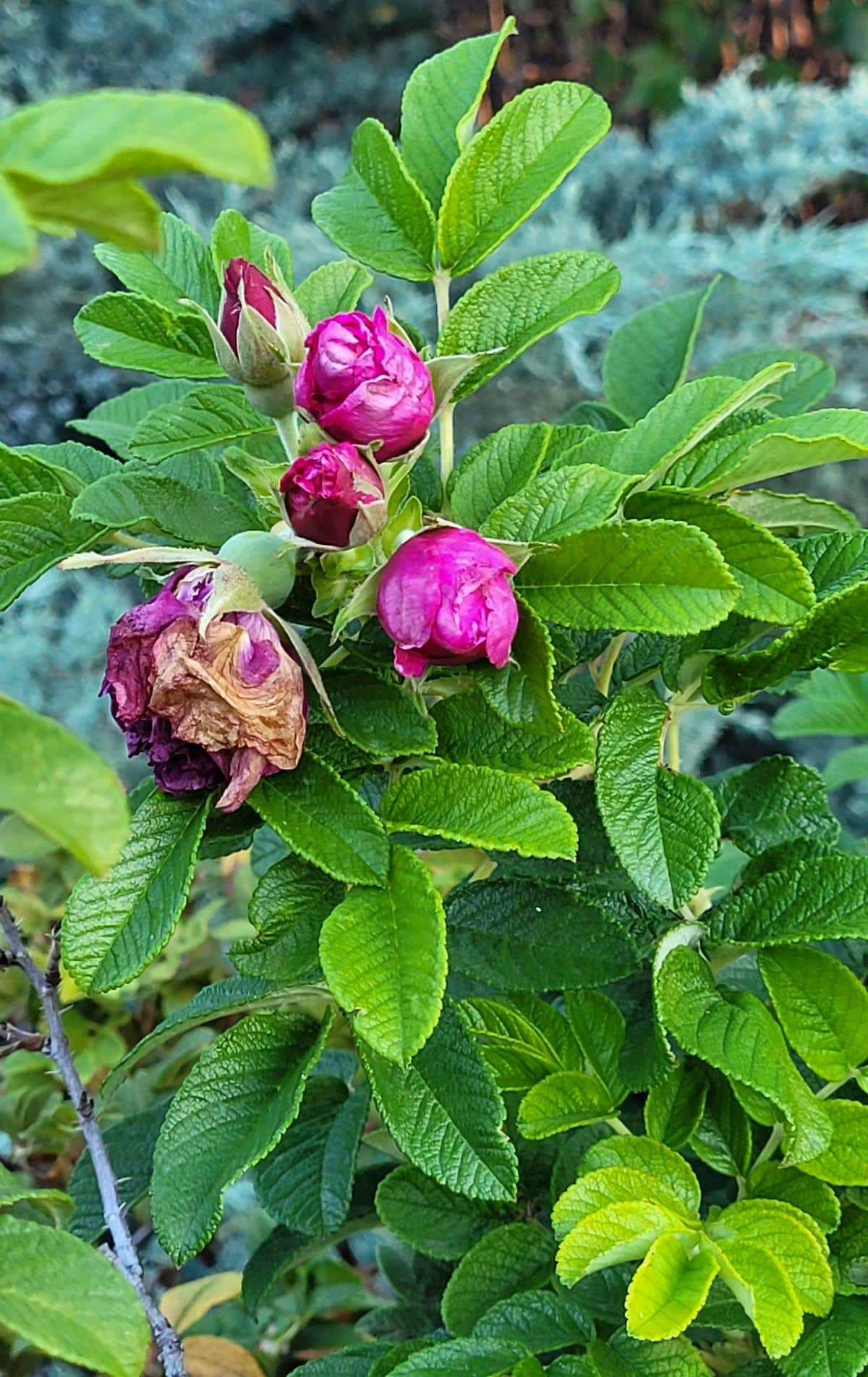
The name of this carmine-red rugosa rose is often shortened to ‘Parfum de l’Hay.’
Whatever name you call it, it bears strongly-scented flowers with loads of fragrance. The semi-double, wine-red blossoms cover the rosebush for a long time, and they bloom more than once per season. The quilted green foliage will turn colors in fall, and they’re also colorful due to the giant, tomato-shaped hips they bear.
Rugosa hybrids are tough as nails. They’ll tolerate salt spray from the ocean and the extremes of heat and cold, and they’re pretty disease-resistant in general. They might sulk in hot climates, preferring the coolness of maritime areas, though they did fine in the heat and humidity of Missouri when I grew them.
‘Tiffany’ (1954), hybrid tea

This rose was named for the artisan family because this graceful, tall rose is also a work of art. Her artistically formed pink blossoms are tinged with yellow at their base, looking so bright and soft – but they last for a long time. And the fragrance is incredible, almost intoxicating, with a hint of lemon.
‘Tiffany’ has those long stems that are so popular, and she makes a great cut flower. You can cut just one or two roses, and they’ll fill the whole vase, and the fragrance will fill your whole room.
The blossoms on ‘Tiffany’ don’t look that big, but they’ll open and look beautiful, and they’ll keep opening, and they can get huge.
Hybrid teas are often complete wimps. Not ‘Tiffany.’ She’s a vigorous grower. If you give her a nice layer of mulch, she’ll survive the winter cold and look good when spring rolls around. She will catch blackspot, so be sure to spray or give her systemic fungicide granules to keep the leaves green.
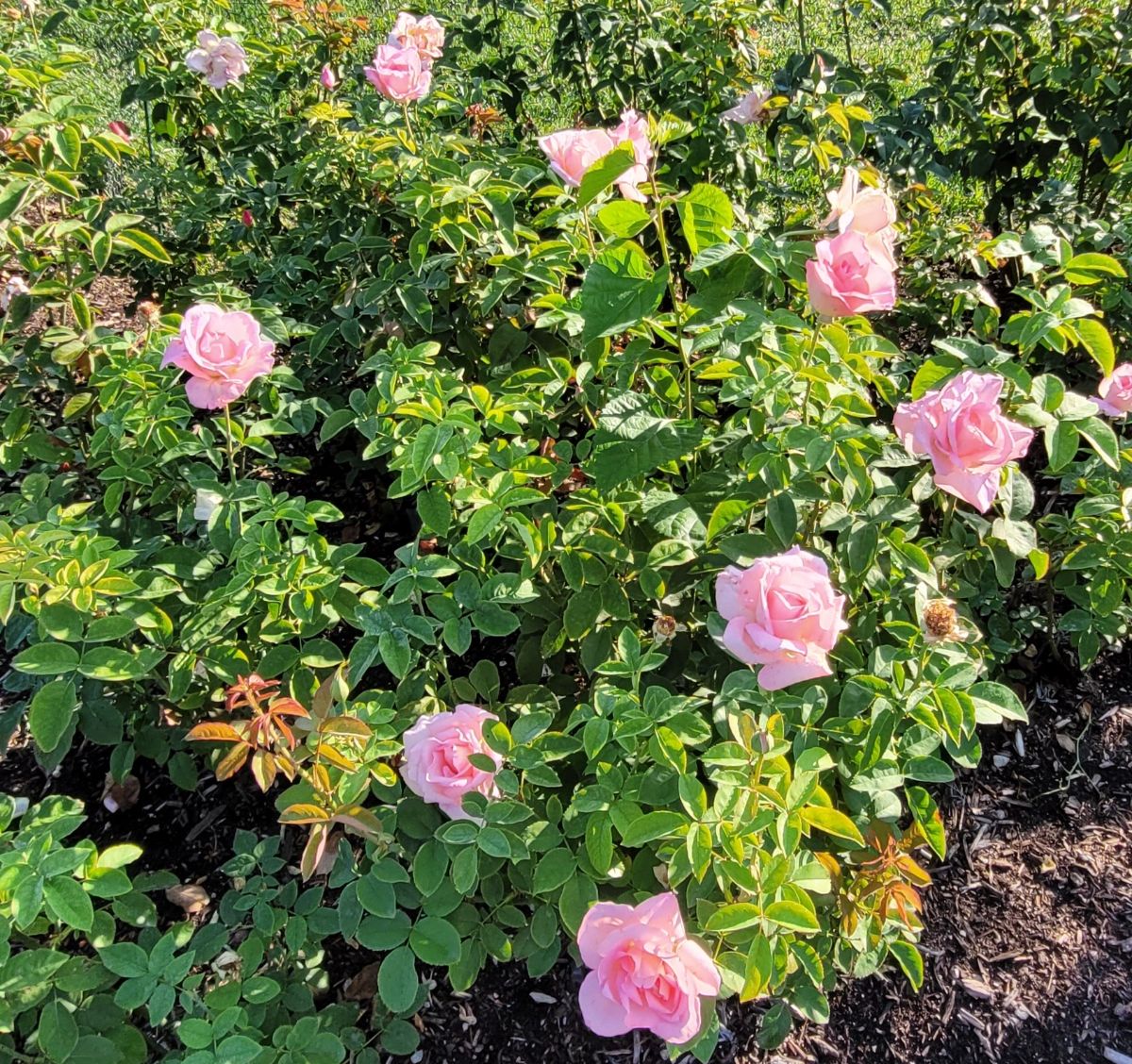
There are a ton of roses I’ve had to leave out of this article because there are so many of them!
Old Antique Roses include an almost endless list of good, fragrant varieties. Celsiana, Madame Hardy, Rose de Rescht, and Rosa damascena bifera, the Damask rose all have amazing fragrances. The Gallica roses include one of the oldest roses in the world, the Apothecary Rose (Rosa gallicia officialis), along with Rosa Mundi, which is a sport of the Apothecary Rose, only with striped petals. Other gallica roses with amazing fragrance include ‘Belle de Crecy,’ ‘Camaieux,’ ‘Cardinal de Richelieu,’ and ‘Tuscany Superb.’
Modern roses include roses like American Pride, Crimson Glory, The Doctor, Fragrant Cloud, Granada, Perfume Delight, Sutter’s Gold, and Sweet Surrender.
Learn more about how to raise roses, including amazing fragrant ones like these, in Rose to the Occasion: An Easy-Growing Guide to Rose Gardening.

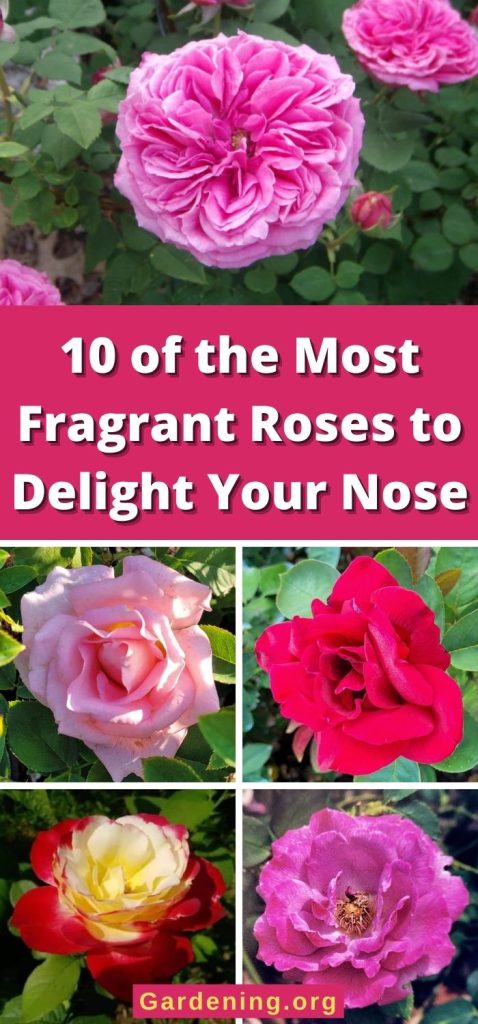
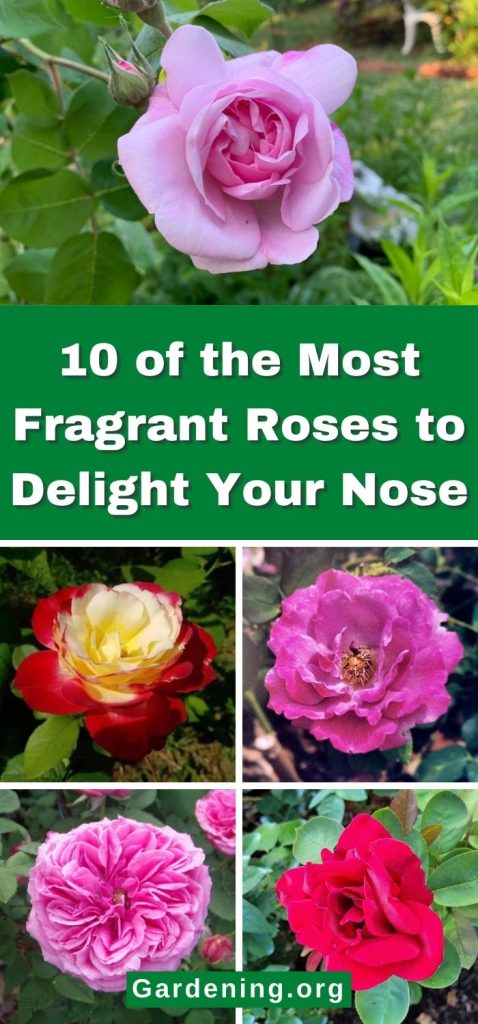

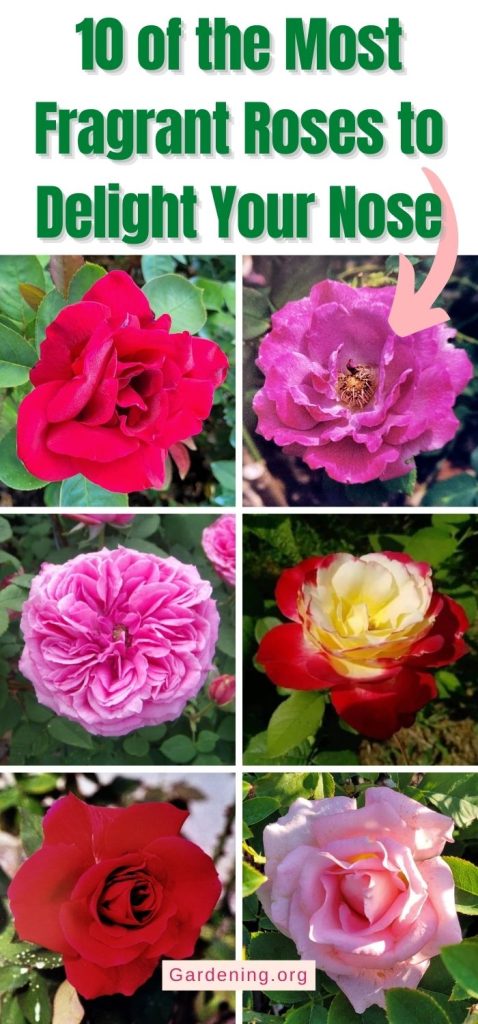

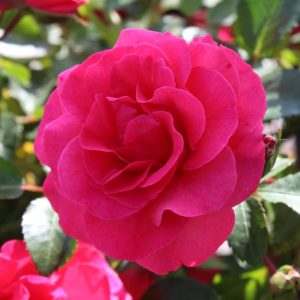
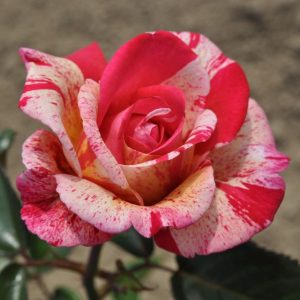

Delores Scarcella
I'm looking for a specific Rose, named Blenda with the most welcome fragrance..
Rosefiend
Sounds like you're looking for Belinda's Dream!
https://antiqueroseemporium.com/products/belindas-dream
JoAnn merse
Wanted Disneyland rose. Lost them in hurricane. JoAnn merse
JoAnn merse
Disneyland rose wanted for my garden.
Rosefiend
Hello JoAnn. Jackson & Perkins has been bringing back some old favorites -- is this the Disneyland rose you're looking for?
https://catalog.jacksonandperkins.com/jp-2024-spring-ecatalog/product/31522591